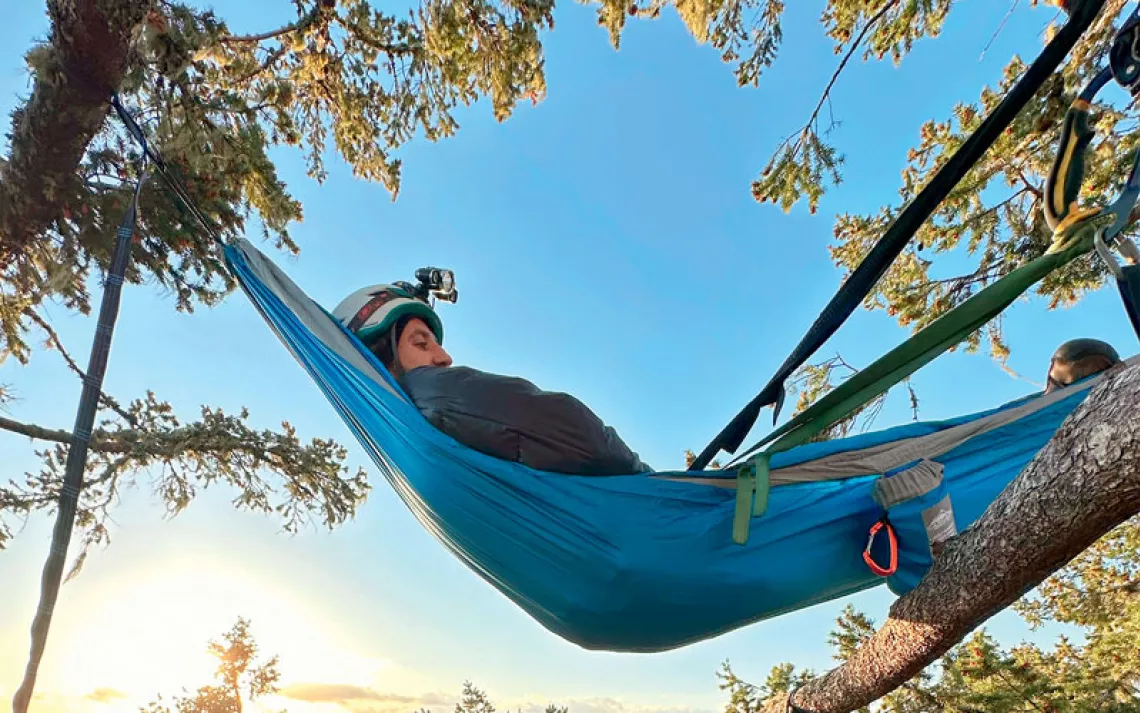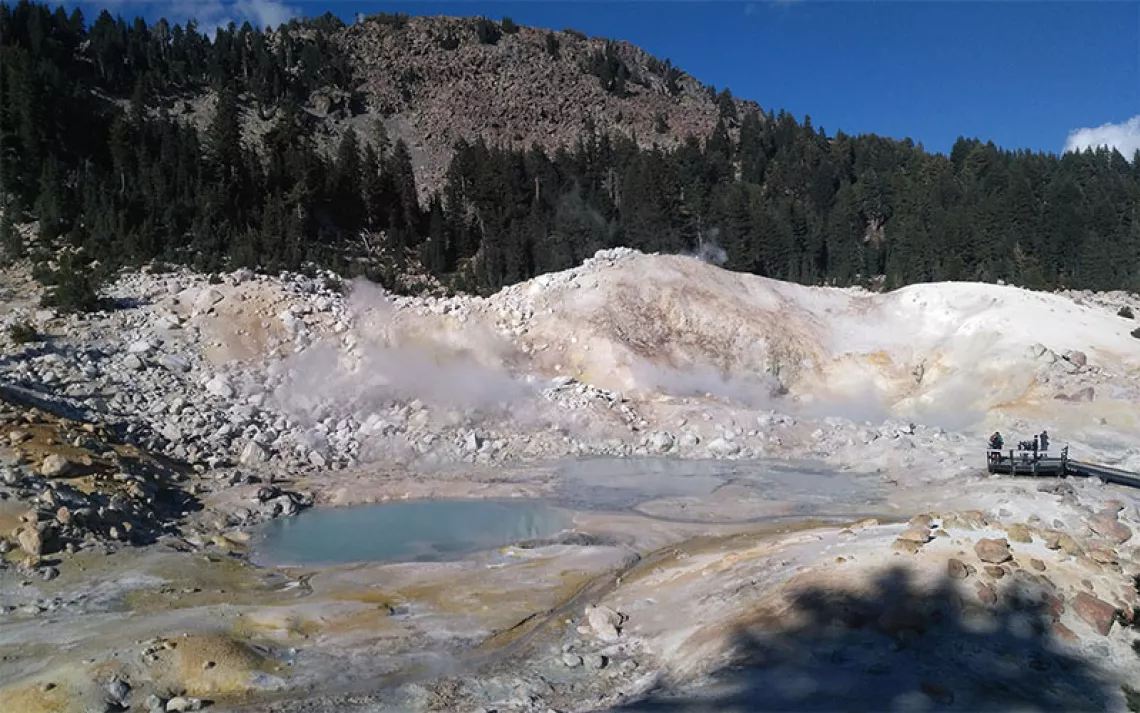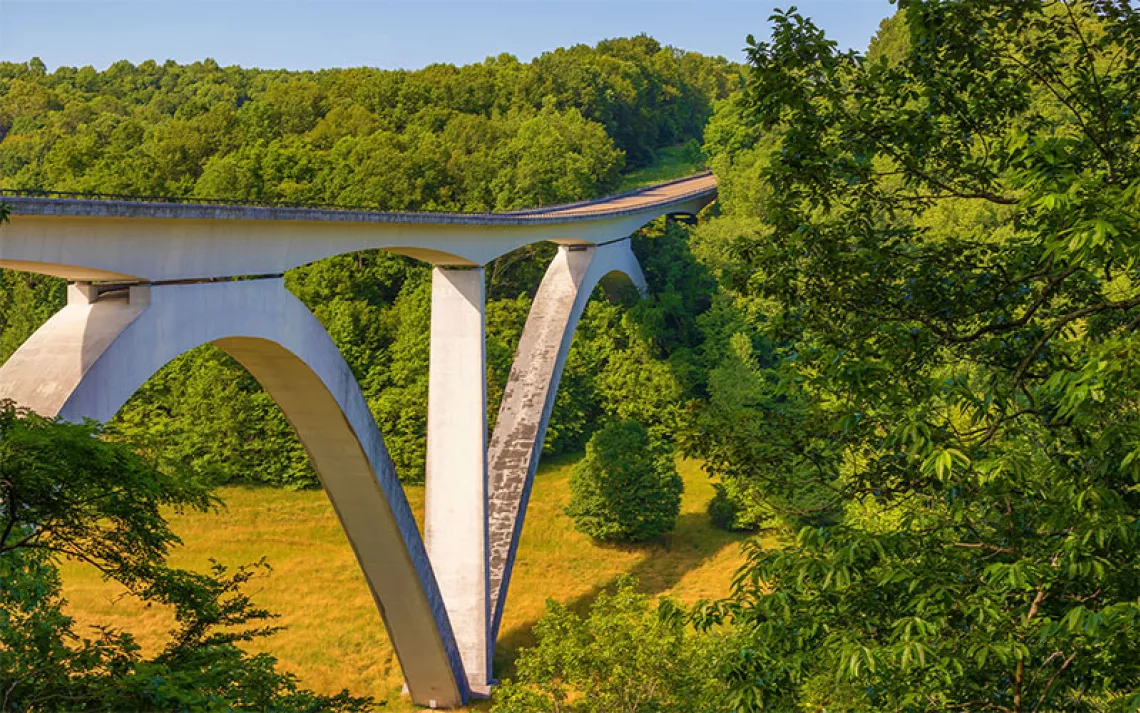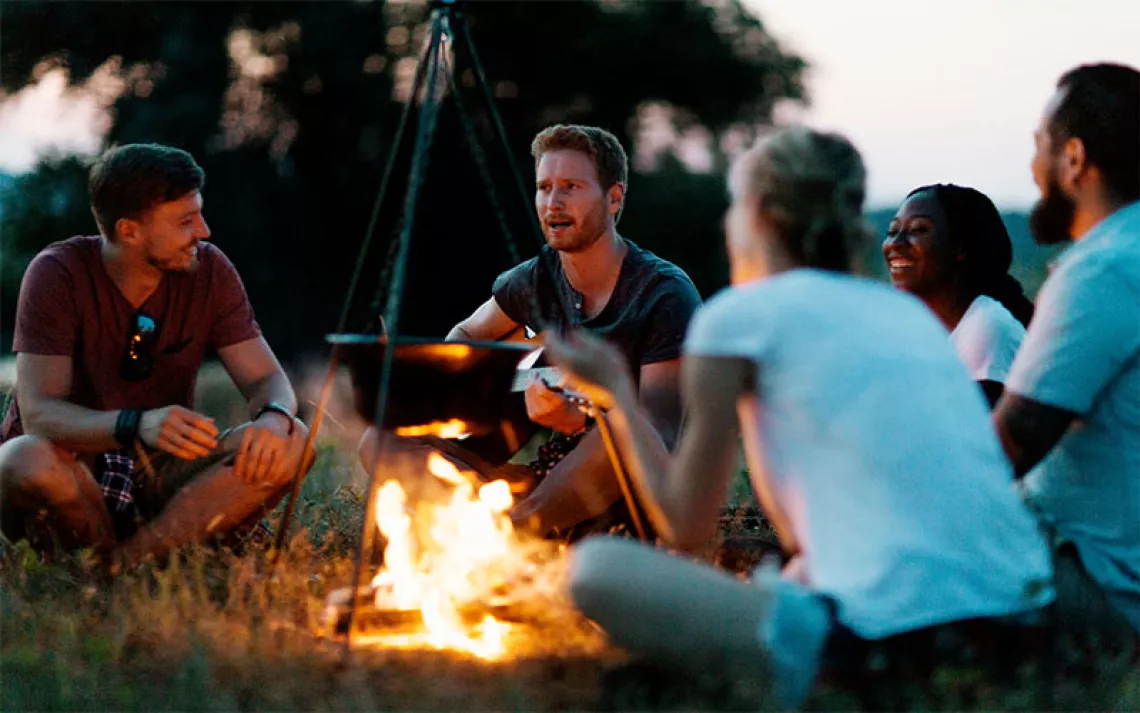How to Master Pandemic Camping
Eight considerations to ensure maximal safety—and fun
The crowds. The lack of parking. The difficulty scoring a reservation. With so many people heading outdoors after months of quarantine, some of my favorite hiking trails and campgrounds are starting to feel like urban hot spots on a Friday night.
It makes sense. To many of us, camping feels like a relatively safe way to reclaim a sense of normalcy and perhaps even socialize with a friend or two (six feet apart, with a campfire between everyone, of course). Even some of my less-than-outdoorsy friends are trying it out. While the Centers for Disease Control and Prevention discourages long-distance travel and close contact with anyone outside your household, it considers camping with members of your household a low-risk endeavor.
“Ventilation is not an issue outdoors, and it’s easier to physically distance when you’re on a trail or in a campsite,” says Dr. Patrick Remington, epidemiologist and professor emeritus at the University of Wisconsin School of Medicine and Public Health. “You need to balance the benefits of outdoor recreation and being social with others with the risks—and I think the benefits far outweigh the risks.”
With that in mind, I’m putting my tent and sleeping pad to use this summer, but I’m engaging with the outdoors a little differently. I’m heading out less often and planning ahead more carefully. I’m staying closer to home, and I’m exploring less-crowded options like backpacking and dispersed camping.
Whether you plan to pack your entire apartment into a car and head to a developed campground or dive into the wilderness with just a backpack, here are some ideas on how to enjoy a safe and enjoyable outdoor adventure under “new normal” circumstances.
1. Know that you might not be alone.
Even if you take steps to recreate in less popular areas or avoid weekend visits, chances are high that you’ll encounter other hikers and campers doing the same.
“People expect no one to be here, and then they are in this sea of people,” says Christine Hoyer, backcountry management specialist at Great Smoky Mountains National Park. “It feels like a time when a lot of people want to get outside, but we all want to give each other space and respect.”
Be aware of your proximity to others (i.e., move off the trail when you run into other hikers), and wear a mask any time you’re indoors or unable to physically distance—while checking into your site, for example, or navigating crowded trails. If you’re in a campground or at a park with an indoor public restroom, wear a mask when inside, stay six feet apart from others, and avoid touching your face before you’ve washed your hands.
“I think bathrooms are relatively safe. Just make sure you wash your hands, or have hand sanitizer that’s at least 60 percent alcohol,” says Luci Magnuson, an epidemiologist at the Wyoming Department of Health. “If you’re not washing your hands after a campground bathroom, that’s gross. You should be doing that no matter what.”
2. Get adventurous, but know your limits.
Edging slightly out of your comfort zone—yes. Ending up in the emergency room—no. Accidents happen, but use extra caution to avoid adding to the burden of already overtaxed medical staff and first responders.
“When somebody needs medical attention, even for a minor injury, that requires that they are physically close to people,” says Remington. “Even with masks, that represents a high-risk situation.”
While no specific activities are off-limits, Hoyer urges outdoor adventurers to engage in activities that are well within their range of physical fitness and outdoor experience.
“If you’ve hiked 10 miles, maybe don’t plan to go 20,” she says. “If you’re not familiar with water crossings, maybe don’t pick the trail that has 14.”
You should also check current CDC data about the number of COVID-19 cases in your camping area—and avoid those in which medical centers are already at capacity.
3. Campgrounds too crowded? Try dispersed camping.
If your favorite campground is full or you’d like to avoid crowds, you might want to investigate the public lands in your area. The Bureau of Land Management oversees 245 million acres (approximately 10 percent of our nation’s land), while the US Forest Service manages 193 million acres (and 4,300 campgrounds!). Both operate rustic and developed campgrounds (some sites can be reserved on recreation.gov), but dispersed camping is permitted on the vast majority of these lands as well. Dispersed camping—that’s camping outside of designated campgrounds—means you’ll probably have to forgo services like toilets or running water, but it’s a great option if you’d like to keep your distance from other campers without necessarily having to backpack very far.
The BLM does ask that you choose a spot that’s been used before if possible (it might appear flat and free of forest debris, for example) and, depending on the state, you might not be able to build a fire on BLM or US Forest Service land (I promise you can live without roasted marshmallows). This type of camping is generally free, and you can stay up to 14 days.
The Free Campsites site offers information about many of these locations, and the US Forest Service and BLM both have interactive maps that allow you to search for lands near you that allow dispersed camping.
4. Consider private lands with fewer campers.
I generally prefer state or federal land over private campgrounds—they’re usually cheaper and I don’t need an in-ground swimming pool near my campsite. But if your state or federal campground is full or closed (or if you’d like to avoid crowds) consider finding a site on Hipcamp or Campspot. Using a similar model to Airbnb, these sites allow campers to stay on private land for a fee. Most of the hosts keep the number of campsites fairly low (you might be the only camper or adjacent to just a few other sites), so it’s a good option if you’d like to try something along the lines of dispersed camping while staying a little closer to the grid.
Be aware that you might literally be in someone’s backyard, and your toilet might be a hole you dig in the woods, a port-a-potty, or the bathroom inside your host’s house (a special consideration with COVID-19). If you’re being extra cautious, look for hosts with a COVID-19 Safety Standards badge, for which hosts self-certify that they are implementing the company’s safety recommendations.
5. Take care when sharing gear or food.
Backpacking and camping often involve pooling gear and supplies ("You bring the water filter, and I’ll carry the stove!”), but if you’re recreating with anyone outside of your household, try to pack all your own gear and food. While the virus is mainly spread through person-to-person contact and not through surfaces, caution is still advised.
“I think it’s reasonable to avoid high-risk things like sharing water bottles, sharing utensils, eating out of a common dish,” says Remington. “Make it hard for the virus to spread from person to person.”
You shouldn’t have to spend a thousand dollars on your own set of supplies for a weekend trip, but make sure you have the basics. If you’re not familiar with the 10 essentials—navigation, sun protection, insulation, illumination, first-aid, fire, repair kit, nutrition, hydration, and shelter—that’s a good place to start (along with a mask and hand sanitizer). While it might seem a little overboard to carry duct tape on a one-night outing in case your tent rips, it’s smart to at least consider the possibilities.
“We should plan not for just the best-case scenario, but for the scenarios we hope will never happen,” says Jeffrey Vail, US Forest Service deputy director of recreation. “It’s good advice during all times, but especially during these times.”
And if you’re backpacking or camping with anyone outside your household, wear a mask any time physical distancing becomes difficult; for example, while helping others to set up a tent or build a fire.
6. If you’re trying something new, get an actual person on the phone for guidance.
Many visitor centers are closed, but that shouldn’t stop you from speaking to a ranger or forest supervisor who can offer safety and planning advice particular to that area.
“Maps don’t give you all the information,” Hoyer says. “Talk to a person who can tell you what your challenges are as far as things like water crossing and elevation.”
Hoyer says they can also point you toward areas “where everybody isn’t.”
You should be able to connect with someone in the backcountry information office at almost every national park, and you can reach a US Forest Service ranger by searching for the office phone number at a specific location.
7. Road-tripping to the outdoors? Proceed with caution.
While I’ve treated my Toyota Corolla like a Jeep on Forest Service roads from Arizona to Michigan’s Upper Peninsula, I don’t recommend it. If you’re planning to explore more remote areas, make sure you’re in a vehicle that’s up to the challenge.
“We have a lot of issues here with people trying to come in on back roads when they don’t have vehicles that are properly equipped,” says Joelle Baird, public affairs specialist at Grand Canyon National Park. “With these Forest Service roads, you don’t really know what they’ll be like until you’re out there.”
A breakdown in a remote location (that might not have adequate cell service) is challenging even in the best of circumstances, but remember that emergency roadside service might put you (and the service provider) in close proximity, creating a higher-risk situation in the Age of Coronavirus.
You should also remain cognizant of the number of indoor spaces you might have to enter en route to your destination.
“Any time you are in a more public setting, make sure you’re wearing a mask, washing your hands or using hand sanitizer, and trying to stand six feet apart,” says Magnuson. “And if you do need to stop to get food, make sure you get it to go.”
8. Investigate local outdoor spaces you may have overlooked.
While exercising the above precautions and general CDC guidelines will make traveling to a national park or remote Forest Service land less risky, it’s still safest to keep your travel distance to a minimum.
“There’s only one Yosemite, and there’s only one Yellowstone. Still, I think now is the time to enjoy what your local community has to offer,” says Remington. “Sometimes we travel a long distance and discover that we have amazing state parks and county parks right in our own backyard.”
For more tips, visit beoutdoorsafe.org or responsible-recreation.org.
 The Magazine of The Sierra Club
The Magazine of The Sierra Club




